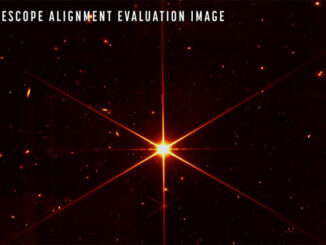
NASA managers have approved the preliminary design for the SPHEREx space telescope, a relatively low-cost infrared observatory designed to look for subtle differences in the distribution of matter across the cosmos that could provide evidence for inflation.
Built around a modest 20-centimetre (8-inch) telescope, the $242 million SPHEREx mission also will focus on the history of galaxy formation and look for water ice and organic compounds, both essential for life as it’s known on Earth, in stellar nurseries and in disks around stars where planets may be forming.
During its planned two-year mission, SPHEREx will collect data on more than 300 million galaxies and more than 100 million stars in the Milky Way, surveying the entire sky every six months to build up a three-dimensional map in 107 near-infrared colours.
“That’s like going from black-and-white images to colour,” said said Allen Farrington, the SPHEREx project manager at the Jet Propulsion Laboratory in Pasadena, California. “It’s like going from Kansas to Oz.”
Measuring the positions of galaxies relative to one another, astronomers may be able to discern statistical patterns caused by inflation, a hypothesised burst of ultra-fast expansion during the first instants of cosmic history.
SPHEREx stands for Spectro-Photometer for the History of the Universe, Epoch of Reionisation and Ices Explorer. It is expected to launch between June 2024 and April 2025.



